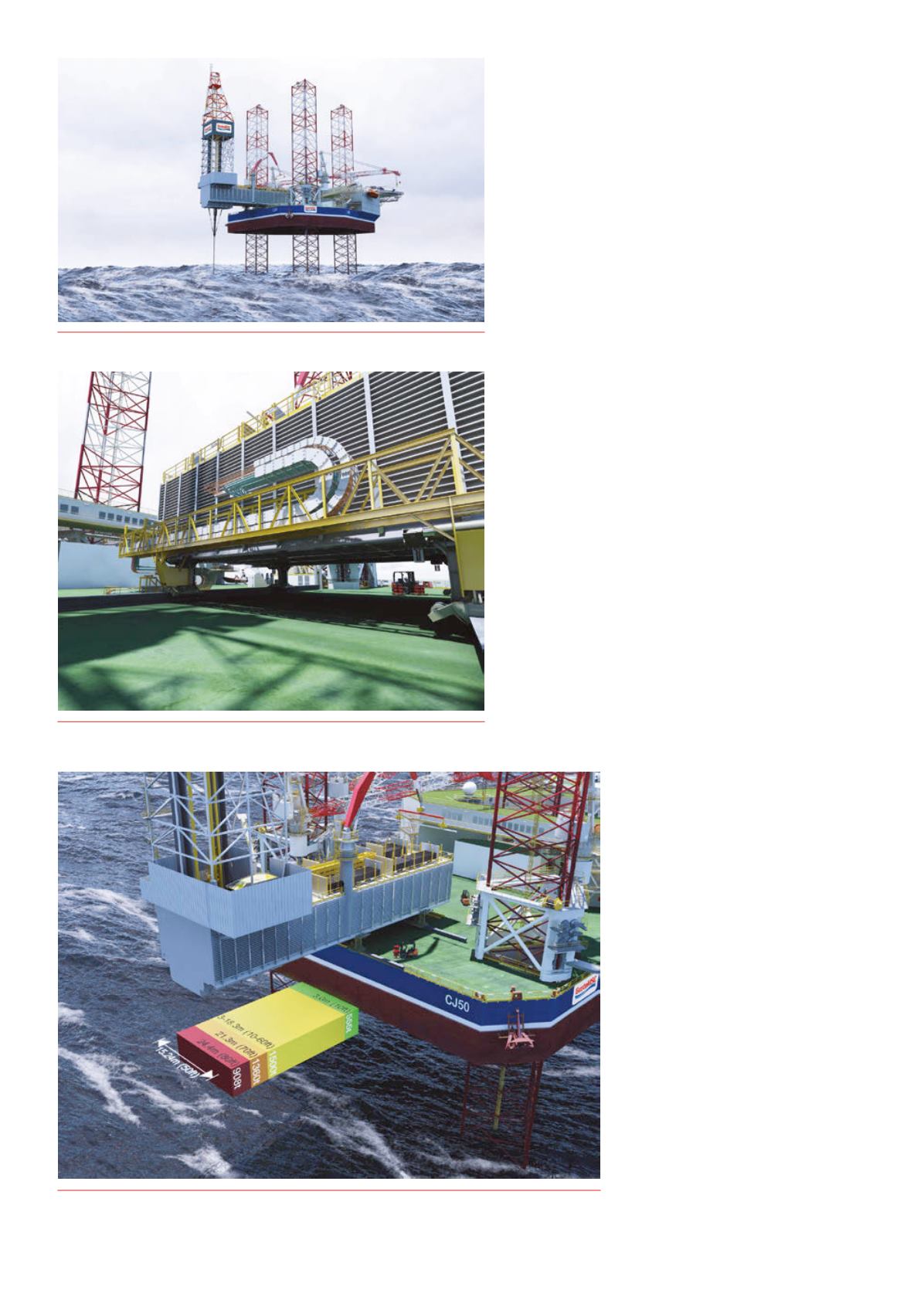
32 |
Oilfield Technology
December
2014
In moderate environments and in water depths of
up to 300 ft (100 m), the jack‑up is the most popular
option. A platform that rests on the ocean floor is stable:
there are no large excursions due to waves, wind and
currents, as seen on floaters. Jack‑ups are now being
taken into deeper waters, for example into the harsh
environment of the Norwegian Continental Shelf (NCS).
Even under adverse weather conditions their workability
is unequalled as they rest on the seabed. Needless to say,
more uptime is an important advantage for a drilling unit
that is leased by an oil company on a day‑rate basis.
Harshenvironment
GustoMSC has its roots in the challenging North Sea
environment for which the CJ series was initially
developed. The combination of environmental forces –
high, short waves, strong currents and strong winds – and
the soil conditions were taken into account in the design
of the Cantilever Jack‑up. It led to the broad acceptance
of the series in this harsh environment by operators and
drilling contractors alike. From the first CJ46s, still active
in the North Sea, through to the latest CJ70s, these units
have proven their reliability over the past 30 years.
Deeperwater
The first CJ46 was developed for operations on the
southern UK and Dutch Shelf, in water depths up to
62 m (203 ft) and 23 m (75 ft) wave height. Ever since,
the CJ was developed and extended with designs
capable of operating further north in the North Sea
with a harsher environment and deeper water. The
first CJ62, designed for operations in water depths up to
106 m (348 ft) and 30 m (98 ft) wave height, was delivered
in 1993. Ten years later, the first CJ70 was designed
for 150 m (492 ft) and 30 m (98 ft) wave height. Further
development of the CJ62 design resulted in a boosting of
its water depth capability to 130 m (492 ft) in the same
harsh environment. Currently, 11 CJ70s
are in operation or under construction.
The company’s latest development is
focused on the CJ80 with the capability
to operate in the northern North Sea in
up to 175 m (575 ft) water depth.
Moderateenvironment
The quest for oil and gas in the
environmentally benign and moderate
regions is also pushing into deeper
water. To date, 106.7 m (350 ft) appears
to be the minimum water depth
requested by drilling contractors.
The CJ46 is the unit suitable for these
water depths, and 31 units have
currently been built or are under
construction. The next step is the
121.9 m (400 ft unit), for which the CJ50
was developed. Currently, 12 units
are presently under construction or in
operation. The latest family member
is the CJ54, capable of operating
in 137.2 m (450 ft) water depth in a
moderate environment or 110 m (361 ft)
Figure 1.
GustoMSC’s CJ50 design.
Figure 2.
Minimiseddeck obstructiondue to the high position of the
X‑Y cantilever and its reducedwidth.
Figure 3.
The skidding envelope of the CJ50 is twice as large as that of a conventional rig.


